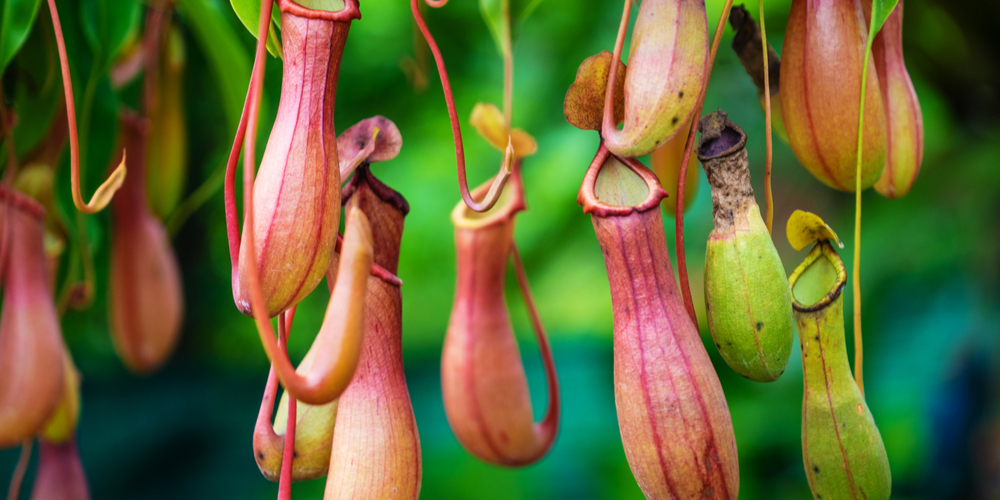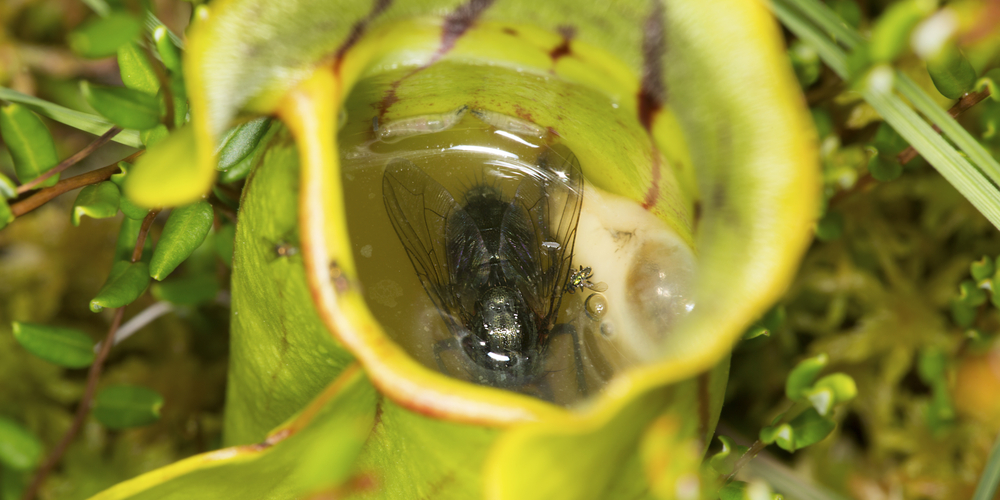Pitcher plants are low-maintenance carnivores native to the US. Unlike other plants, these take their nutrients from the insects they consume. The plant eats insects using modified leaves known as “pitfall traps.” But can you grow pitcher plants in zone 8? And how can you make the most out of these plants in this hardiness zone? If you are looking for an answer to these questions, don’t worry. This “Pitcher Plant Zone 8” essential guide includes everything you must know about this unique-looking plant.
What is a pitcher plant?

The flowers’ vase-like structure attracts insects by secreting delicious nectar after digestion. The insects get trapped inside the flower and turn into food for the plant. There is no need to fertilize pitcher plants! You can add this plant to your garden to reduce the number of insects bothering you in your yard!
These plants look exotic and weird: they are perfect for adding texture and character to your garden. They grow well in containers or as terrarium plants and don’t need much attention from your side to thrive, provided that you give them what they need to survive.
Pitcher plants come in different colors, shapes, and dimensions: select the ones that suit your need the most. In general, these plants’ colors are bright and attractive: a great addition to any garden.
Pitcher plants can grow in different climates, from tropical to mild. Depending on the variety, you may have to make amendments to your soil. If you live in colder areas, you may have to protect them from the winter temperatures.
Characteristics
Pitcher plants are excellent garden plants. You can find varieties that grow up to three feet tall. However, if you have limited space at your disposal, don’t worry: some species only grow up to a few inches. Colors include burgundy, yellow, green, and bright red. These plants usually blossom single flowers that rise on the stalks during the spring.
Although native to North America, their exotic looks will make your garden look tropical, even in zone 8. Don’t forget to pick a variety suitable to your hardiness zone and check its basic needs before purchasing it. Ensure you can meet its sunlight, water, and soil preferences.
Pitcher Plant Zone 8: Our Caring Tips
Most pitcher plant species thrive in USDA hardiness zones from 7 to 9, but some survive even in colder or warmer areas. In the wild, these plants usually grow in wetlands. So, make sure you maintain the soil moist and rich to have them thrive in your garden.
Use organic material and a mix of sand and peat moss to recreate the ideal growing conditions for this plant. You can also find pre-made carnivorous plant potting mixes if you don’t want to make your own.
These plants like to live in boggy conditions. The soil must be damp at all times. Rainwater will most likely not be enough: ensure you frequently (and consistently) water your pitcher to keep it healthy.
Increase the frequency during the hottest months of the year, especially if you located it outdoors. However, don’t keep your plants too wet. Feel the soil before watering: it should be moist at a depth of around for inches, not more. Overwatering might cause these plants to rot.
Place your pitcher plants under full sun. In shady locations, the plants lose their bright colors. In general, the more sunlight, the better.
While you won’t need fertilizing, if you planted your pitcher indoors, you may notice better results by adding a few drops of liquid fertilizer to the plant. Also, don’t forget to trim brown leaves in winter to stimulate healthy growth. These plants require a period of dormancy in the winter, so reduce watering during this time of the year.
If you are expecting the temperatures to drop, consider adding mulch around the base of your plant. It will help regulate the soil temperature and protect your plant’s roots. Do not bring your plant indoors to avoid disturbing the pitcher’s natural cycle.
Pitcher Plant Zone 8: The Bottom Line
The pitcher plant is a fan variety you should add to your garden if you are looking for a plant to add character to your yard. Its exotic looks and bright colors will grab the attention of any visitor to your garden. Plus, they are easy to grow and feed on insects. If you need a fuss-free plant, look no further than pitcher plants!
